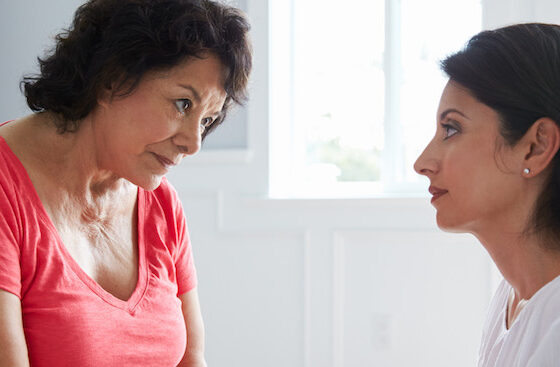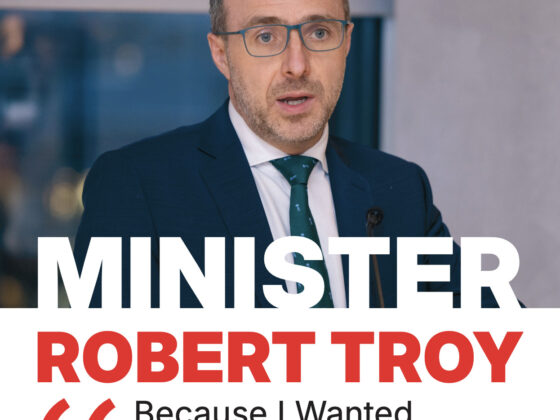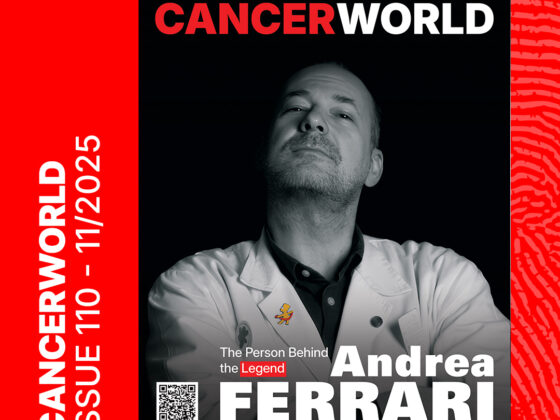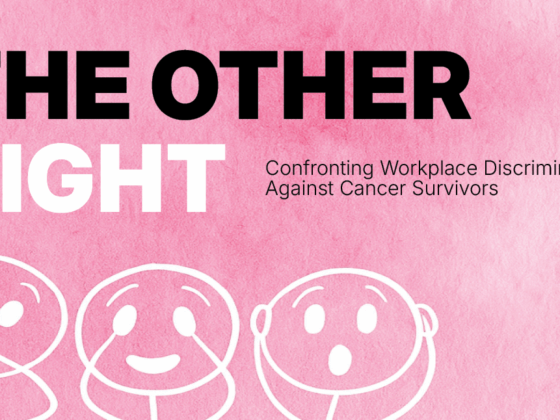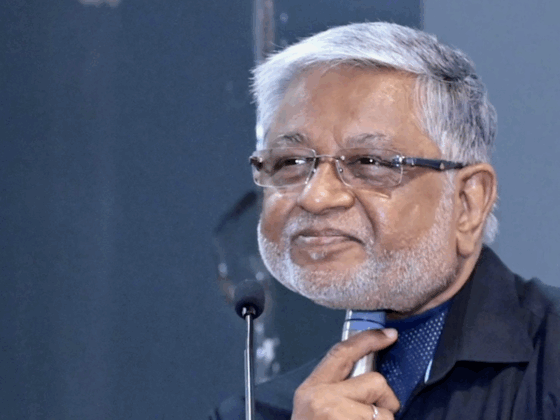When cancer epidemiologist and medical doctor Nirmala Bhoo-Pathy returned to Malaysia in 2011 after completing her PhD in cancer epidemiology in the Netherlands, she hadn’t expected the move to negatively affect her research prospects. As it turns out, she was wrong. Getting funding for cancer research and getting those results published, she soon discovered, was much harder for researchers based in Malaysia than in the Netherlands.
There were several hurdles: domestic funding was scarce for epidemiological research; grants available for researchers in low-income countries were not an option, as Malaysia is classed as an upper-middle-income country; and international funding for low- and middle-income countries (LMICs) is anyway predominately for infectious diseases, not for cancer. Funding opportunities that she might have been eligible for came with the caveat that she would need to collaborate with a researcher in a western country to be eligible.
“At that time, we didn’t know anyone [western researcher] who worked in the same area, and when we wrote emails, they weren’t replied to and we didn’t get the collaborators,” says Bhoo-Pathy. So while a postdoc in a western country typically gets published and recognised quite quickly, she says, it took her ten years to overcome all the hurdles and reach a level when getting published became easier.
Bhoo-Pathy is now an Associate Professor of Clinical Epidemiology, in the faculty of medicine at the University of Malaya, and a recognised name in cancer research, with countless publications to her name that contribute vital evidence to discussions about how to make the best use of available resources to optimise cancer outcomes in the region.
But her many years of battling discrimination and misogyny to get to where she now is have not been easy, and she says she’s been “angry for a long time”.
Bhoo-Pathy’s experience is not unique. Many cancer researchers from developing countries face additional hurdles in their work because cancer research is still dominated by researchers in the Global North and reflects the perspectives and priorities of high-income countries. Researchers from Asian and African countries remain largely dependent on western institutions for expertise and funding, which frequently ties them to working on western research agendas, often at the cost of doing research that could help address the very great needs of their own communities.
A growing awareness of this issue, in recent times, has led to calls to ‘decolonise healthcare research’. Cancer World spoke to leading cancer experts from both sides of the global divide about why this matters, and what can be done to ensure that resource capacity is shared out more fairly.
Greatest burden, least research
Logic might dictate that cancer research efforts should focus on the areas of the world that face the heaviest burden. In reality, the opposite is the case.
Over the next two decades, the World Health Organization estimates that more than 80% of new cancer cases will occur in low- and middle-income countries, where survival rates are currently the lowest. Yet only a tiny fraction of almost US $30 billion spent on cancer research every year goes towards research that could help countries that need it most to develop evidence on solutions that would work for their populations.
Looking specifically at randomised controlled trials ‒ the most rigorous research methodology ‒ a June 2021 study published in JAMA Oncology showed that, between 2014 and 2017, fewer than 1 in 10 randomised controlled trials in cancer were led by researchers in low- and middle-income countries.
High impact research, low impact-factor journal
Along with structural issues like funding, which limit opportunities to conduct high quality research, researchers from low- and middle-income countries face a variety of additional obstacles to getting published in high impact journals. The JAMA Oncology study found that trials from low- and middle-income countries are more likely to identify effective therapies and have a larger effect size than trials from high-income countries, yet they were published in low impact-factor journals. “There is a funding and publication bias against trials led by LMICs,” the study said.
“Reviewers often comment that the research is not ‘novel’… but our setting and our challenges are unique”
This is illustrated by Bhoo-Pathy’s experience. She works in clinical epidemiology and implementation research, focussed on clinical and patient-centred cancer outcomes, and says she often finds unjustified resistance from journals she approaches. Reviewers often comment that the research is not ‘novel’, and ‘nothing new’, on the grounds that the topics have already been researched in high-income settings.
“But what is different is that our setting and our challenges are unique,” says Bhoo-Pathy. “Amid scarcity of health resources, what we are aiming to do is to share research findings and, importantly, local solutions that may work. And if we don’t get to publish this, there is no recognition of the science and we cannot share our best practices with other [countries with] similar settings,” she said.
In a survey of African oncology professionals conducted by the medical journal, ecancer, in 2019, almost 8 in 10 respondents reported facing barriers to getting their research published. Most of them cited a lack of funding, inadequate research techniques, geographical bias and linguistic difficulties to be the reasons. A lack of available data relevant to their regional or racial context was also a problem.
Research from low- and middle-income countries often gets shunted away from mainstream journals to global health ‘open access’ journals. But while these are free to access they charge up to US $5,000 in article processing charges, which researchers in less developed countries cannot afford.
The ecancer survey also showed 85% of African oncology professionals had faced problems accessing the latest research and guidelines relevant to inform their patient care, citing cost as the biggest obstacle.
As the ecancer paper concluded, “This results in ‘lost science’ in the form of information which is either not published or simply not made freely accessible to all. This leads to doctors being unaware of specific data and best practices which would make a difference to outcomes for their patients.”
There is now a growing recognition among editors of some medical journals that things have to change.
In 2019, the Lancet Group adopted a diversity pledge that committed them to increasing the representation of women and colleagues from low- and middle-income countries among their editorial advisers, peer reviewers, and authors. In an editorial comment they noted that, “Editors generally use reviewers who are recognised experts in the field and, given the pressure of time and volume of submissions, often rely upon tried and tested networks,” and pledged that, “With our renewed recognition and commitment to gender and diversity, expanding and diversifying our reviewer pool is now a priority.”
They set targets of increasing the proportion of reviewers at The Lancet by 25%, with local reviewers mandatory for all global health content and with a ‘strengthened preference’ for at least 50% Global South contributors for Series and Commissions.
More recently, the Lancet Global Health, in its February 2021 editorial, commented on the role journals play in maintaining and perpetuating the status quo, and called for readers to share their expertise and experiences on their frustration with global health research and what needs to change.
Implementation research: high impact, low priority
Much of the research done in high-income countries is not relevant in the rest of the world. A lot of the funding for cancer research in these countries comes from industry and relates to development of new drugs like immunotherapies and precision medicine approaches which are out of reach for most cancer patients, including many public health systems in Europe. CAR-T cell therapy, for instance, where a patient’s T cells are modified in the laboratory to enable them to identify and kill cancer cells, costs around US $500,000 in the US, and can go up to US $700,000 or US $1mn, with administration and hospitalisation costs included.
CS Pramesh, Director and Head of Thoracic Surgery at the Tata Memorial Hospital, Mumbai, points out that funding research on how best to implement interventions that are known and proven to be effective in the community, can have a much greater impact in terms of lives saved and improved.
Many of these interventions are low-cost and provide solutions for low-resource settings, and Tata Memorial Hospital, India’s foremost tertiary care cancer centre, excels in doing cost-effective, implementable and scalable interventions for cancer control.
One good example is their study on cervical cancer screening, where they proved that visual inspection with acetic acid, done by trained primary care workers, is a viable alternative to pap smears and resulted in 30% reductions in deaths from cervical cancer.
“What we are trying to do with all of these is to bring the cost of cancer care down and provide effective and practical alternatives to expensive interventions”
The hospital is currently involved in trials using repurposed drugs for treating cancer, said Pramesh. The hospital is partnering with the Medical Research Council of the UK in a study on the use of aspirin as an adjuvant after curative treatment of common cancers such as breast, prostate, colorectal, oesophageal and gastric. “What we are trying to do with all of these is to bring the cost of cancer care down and provide effective and practical alternatives to expensive interventions which have been developed in the West, because from a practical viewpoint, [they are] not implementable in the Indian situation,” he said.
Studies in resource-poor countries have a global relevance
If good quality studies focussed on community needs in low- and middle-income countries find funding and support from local and international partners, the evidence generated can also benefit countries with greater resources.
For example, in a landmark study of breast cancer screening, whose 20-year follow-up results were published in the BMJ in January 2021, a team of researchers led by Indraneel Mittra, a surgical oncologist and professor emeritus at the Tata Memorial Hospital, showed that clinical breast examination conducted every two years by primary healthcare workers led to a relative reduction in deaths from breast cancer of almost 30% among women aged 50 and over.
That trial was supported by the US National Institute of Health and by grants from the Indian Department of Atomic Energy, and the philanthropic Tata Trusts. It led to a recommendation that clinical breast examination should be considered for breast cancer screening in low- and middle-income countries, where screening programmes using mammography are not sustainable because of the cost of equipment and trained radiologists. A mammography machine in India, for example, costs US $400,000 and the price per mammograph is US $26 which is more than the entire annual per capita spend on public health, which stands at just $19.
The randomised controlled trial followed more than 151,000 women between 35 and 64 years for 20 years. In addition to demonstrating the significant drop in mortality among women aged 50 or more, the trial showed this affordable approach to breast screening resulted in a significant reduction in the proportion of women diagnosed with stage III or IV disease (37% v 47%, P=0.001), and in more breast cancers being picked up at a younger age (55.18 v 56.50; P=0.01).
The findings are particularly important because breast cancer remains one of the most common cancers across the world and the failure to diagnose the disease at an early stage accounts in large part for poorer survival rates in low- and middle-income countries. Some of the mortality-to-incidence ratios reported in Middle, Eastern, and West Africa, for instance, are as high as 0.55, compared with 0.16 in North America.
The Indian study was the first to focus on the role of clinical breast examination alone, said Rajendra Badwe, surgical oncologist and now director of the Tata Memorial Centre, who co-authored the BMJ paper. Nineteen states in India have already trained their frontline health workers in clinical breast examination, and the Tata Memorial Hospital is in talks with health officials in Brazil who are interested in implementing results of the study, he adds.
But the study also has a relevance in countries with much higher levels of resources, feeding evidence into evaluations of the risks versus benefits of mammography screening programmes. In 2014, 25-year follow-up results of a Canadian study of almost 90,000 women aged 40‒59 showed that, in a setting where adjuvant therapy is freely available, annual mammography for breast cancer screening resulted in one woman being overdiagnosed for every 424 screened, yet mammography did not lead to a reduction in deaths as compared to screening by physical breast examination.
“Global health is really about common processes and structures and systems that create and maintain health inequity or promote equity”
Anna Dare, Global Cancer Disparities Fellow at Memorial Sloan Kettering Cancer Center, argues that learning between countries at different levels of economic development should always be seen as something that occurs in both directions, where groups learn from each other’s clinical and research experiences and adopt and adapt them for their own contexts.
Dare’s own interest in health inequities stemmed from the realisation that life expectancy, including after a cancer diagnosis, on the Māori side of her family in New Zealand was much lower than for non-Māori, despite New Zealand being a high-income country.
“Global health is sometimes erroneously thought of as referring to geography. But it’s really about these common processes and structures and systems that create and maintain health inequity or promote equity,” said Dare, which is why it is important to consider inequities not only between countries but also within countries.
Building local research capacity
Richard Sullivan, professor of Cancer and Global Health at King’s College London and Director of the Institute of Cancer Policy (ICP), highlights the limitations of the current situation where so much global health research is still led by experts from the Global North, who are ‘parachuted’ into countries they are completely unfamiliar with.
It is a bit like being a travel writer, visiting a Greek island and still being confident enough to write a book on Greek culture, says Sullivan. “You have visited the country only once, you don’t know the language, you’ve never lived there and haven’t even talked to people there properly.”
He feels much global health research often overlooks important distinctions, such as those between countries where cancers are primarily related to infections and those where non-infectious related cancers predominate. These distinctions do not necessarily correlate closely with country income levels ‒ low, lower-middle, upper-middle, high ‒ which tend to be used to categorise countries for research purposes.
“I suddenly saw that the narrative discourse was completely disconnected from the reality on the ground”
Sullivan has long been an ardent advocate of getting diverse voices in shaping global cancer policy. He says his outlook comes from his diverse background ‒ a Christian Lebanese father and Irish mother ‒ and having spent his childhood in East Africa and Middle East. Later, working in Zambia, India, Central African Republic DRC, he realised that the reality of the people in these countries was not reflected in papers coming out of western countries, “I suddenly saw that the narrative discourse was completely disconnected from the reality on the ground.”
What makes it worse, he says, is when these researchers fail to give adequate credit and recognition to the local researchers they will have relied on, rendering their contribution invisible, making it harder for local researchers to attract their own research funding, and reaffirming perceptions that expertise resides only in the Global North.
Commitments like those made by The Lancet Group to increase the proportion of their contributors and reviewers from the Global South will hopefully help to end the worst of these practices. Journals such as ecancermedicalscience, published by the European Institute of Oncology, which focus specifically on under-resourced communities, also offer important platforms for research and researchers who face unfair barriers to getting published. Importantly, not only are the articles in the journal free to read and download, but authors who don’t have funding for publication are not charged any processing fees. The ecancer website also offers a free platform for cancer research done across the world, along with educational resources.
Yet even dedicated journals like ecancer ‒ whose editor in chief, Eduardo Cazap, was founder and first President of the Latin American & Caribbean Society of Medical Oncology (SLACOM) ‒ can struggle to address the domination of western researches in the papers it publishes. Recognising the problem, the journal recently revised its submission criteria to only accept articles which feature at least one author from a low- or middle-income country, or which have a significant impact on under-resourced settings.
Nurturing researchers ‒ a local and global responsibility
Widening opportunities to get published, and incentivising researchers with greater funding access to collaborate with researchers in countries with fewer resources, are an important part of efforts to decolonise cancer research. But governments of developing countries need to back those efforts with investment, says Dorothy Lombe, clinical and radiation oncologist at the Cancer Diseases Hospital in Zambia. Only when governments invest in research and science through their national budgets will they have the agency to decide what kind of research they want to do and create trained personnel who can conduct it, she says.
After her training in Russia and South Africa, Lombe says she was lucky to return to Zambia at a time when cancer control had just started to be seriously discussed. The country launched its first National Cancer Control Programme in 2016 and is currently (2021) in the process of setting up a National Cancer Institute. Lombe is proud that her country has included HPV vaccination in its national healthcare programme, having adapted the WHO recommendations for HPV vaccination for girls between 9 and 14, to focus on girls between 14-15, before they get sexually active, to fit the constraints on its budget.
“Who would have thought that a country like Zambia [which is among the poorest in the world] will afford to vaccinate its girls against cervical cancer?” asks Lombe, who sees it as a sign that her country is going in the right direction.
“Mentoring by seniors and domestic funding for research are essential to improve the situation”
Yet researchers from countries like Zambia still struggle with conducting research, because of high patient loads and poor support structures, says Lombe. She believes mentoring by seniors and domestic funding for research are essential to improve the situation. Her views are echoed by Bhoo-Pathy, who says people like her who have been in the field for a long time need to ‘pass on the mic’; they need to groom younger researchers and give them the opportunity to lead.
Researchers, and research and funding bodies in high-income countries, for their part, need to be aware of the extent to which they dominate research partnerships, agendas and spaces, particularly through the flow of resources, and the impact this has on research priorities, says Dare from Memorial Sloan Kettering Cancer Center. “If we want to improve cancer control on a global level, we need to ensure the voices of those most affected by cancer inequities are not only heard, but are setting the agenda.”
The time of reckoning may already be here, with the COVID-19 pandemic dramatically highlighting the dangers that global inequities pose even to higher-income countries. The growing social and political awareness about our interlinked world is opening opportunities to move decolonising cancer research up the agenda. For global health institutions and journals, it’s time to translate words into action.
Illustration by Alessandra Superina



